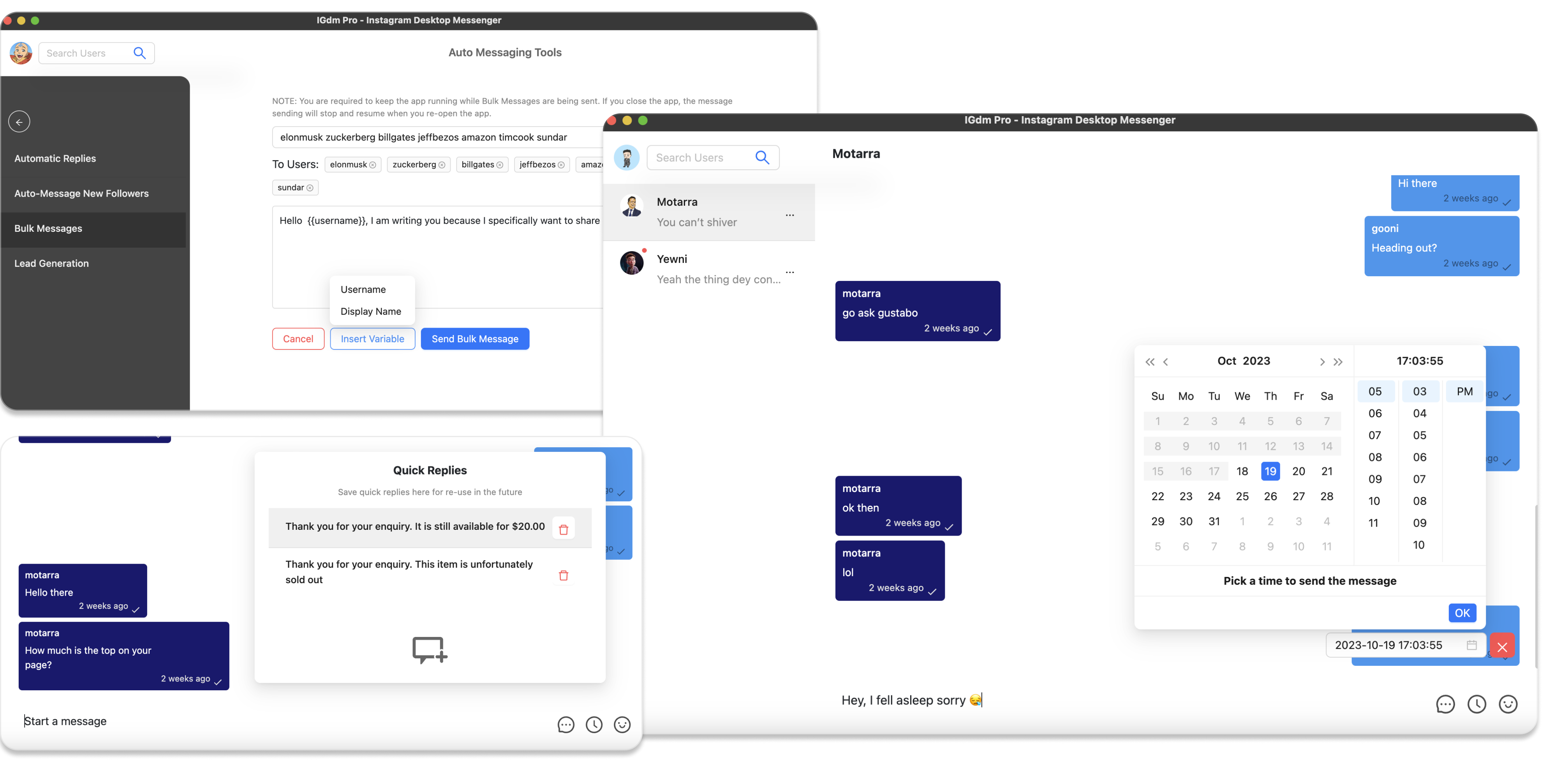The Ultimate DM Management Framework for Australian Social Teams
For Australian social media teams, the Instagram Direct Message (DM) inbox has transformed from a simple chat feature into a bustling frontline for customer service, sales, and community building. As more Aussies turn to Instagram to connect with brands, managing the sheer volume of DMs can be a monumental task. A missed message can mean a lost sale or a disgruntled customer, making an efficient DM management framework not just a nice-to-have, but a business necessity.
This guide provides a comprehensive framework for Australian social teams to handle their Instagram DMs with the efficiency of a seasoned barista during the morning rush hour in Melbourne.
Table of Contents
- Why a DM Framework is Crucial for Aussie Brands
- The Ultimate DM Management Framework
- Putting it All Together with the Right Tools
- Conclusion: Your Path to DM Mastery
Why a DM Framework is Crucial for Aussie Brands
The digital landscape in Australia has seen a significant shift. Consumers now expect to interact with brands on the platforms they use daily. For many, that platform is Instagram. A solid DM management framework helps you:
- Improve Response Times: In a world of instant gratification, a quick response can be the difference between a sale and a lost customer.
- Enhance Brand Reputation: Professional, timely, and helpful responses build trust and a positive brand image.
- Nurture Leads: Not every DM is a support query. Many are from potential customers. A framework ensures these leads are identified and nurtured.
- Boost Customer Loyalty: Excellent service turns customers into loyal advocates for your brand.
The Ultimate DM Management Framework
Step 1: Triage and Prioritize Your Inbox
The first step to taming the DM chaos is to categorize incoming messages. This allows your team to prioritize effectively. Common categories include:
- Hot Leads: Inquiries about pricing, products, or services.
- Customer Support: Questions or issues from existing customers.
- Collaborations: Messages from potential partners or influencers.
- General Inquiries: Questions that don't fall into the other categories.
- Spam: Unsolicited or irrelevant messages.
Using a tool with a Labeled Conversations feature is a game-changer here. A powerful desktop application like IGdm Pro allows you to create custom labels and color-code your conversations, providing at-a-glance clarity of your inbox.
Step 2: Set Service Level Agreements (SLAs) for Response Times
An SLA is a commitment to respond within a certain timeframe. This sets a clear standard for your team and manages customer expectations. For example, you might aim to respond to all "Hot Leads" within one hour and all "Customer Support" inquiries within three hours.
Step 3: Arm Your Team with Templates
Many of the DMs you receive will be repetitive. Creating a library of templates for frequently asked questions saves time and ensures brand consistency.
A tool with a Quick Replies feature, like IGdm Pro, allows your team to access and use these templates with a single click, dramatically speeding up response times.
Step 4: Embrace Smart Automation
Automation is your best friend for managing high volumes of DMs.
- Automatic Replies: Use auto-replies to instantly acknowledge a message. This reassures the user that their message has been received and sets an expectation for when they'll get a personal response.
- Automated Greetings: Welcome new followers with a personalized DM. This is a great way to start a conversation and introduce them to your brand.
IGdm Pro offers both Automatic Replies and Automated Welcome Messages, allowing you to maintain a responsive presence even when you're offline.
Step 5: Master the Follow-Up
Leads can go cold if they're not nurtured. A systematic follow-up process is crucial.
- Set Reminders: If a conversation requires a follow-up, don't rely on memory. Use a tool with a Message Reminders feature to ensure you circle back at the appropriate time.
- Schedule Messages: For planned outreach or follow-ups, Scheduled Messages can ensure your communication is timely and consistent.
Step 6: Measure, Optimize, Repeat
Your DM framework should be a living system. Regularly review your performance.
- Key Metrics: Track metrics like average response time, resolution rate, and the number of leads generated from DMs.
- Refine Your Process: Use this data to identify bottlenecks and areas for improvement in your framework.
Putting it All Together with the Right Tools
For Australian agencies and social media teams managing multiple client accounts, a desktop-based DM management tool is essential for implementing this framework effectively. A tool like IGdm Pro centralizes your workflow, allowing you to:
- Manage Multiple Accounts: Seamlessly switch between client inboxes from a single dashboard.
- Streamline Team Collaboration: With features like Labeled Conversations, your team can easily see which messages need attention and who is handling what.
- Scale Your Outreach: Use Bulk Messaging to send personalized announcements or promotions to targeted lists of followers.
Conclusion: Your Path to DM Mastery
An efficient DM management framework is the backbone of a successful Instagram presence for any Australian brand. By categorizing messages, setting response time goals, using templates, and embracing smart automation, you can transform your DM inbox from a source of stress into a powerful tool for growth.
With a clear framework and the right tools, your team can work smarter, not harder, to build a thriving community, nurture leads, and deliver the kind of customer service that sets your brand apart.
